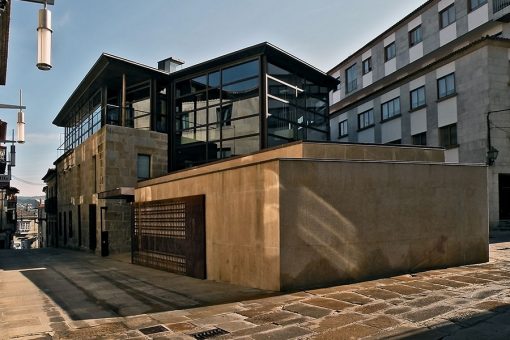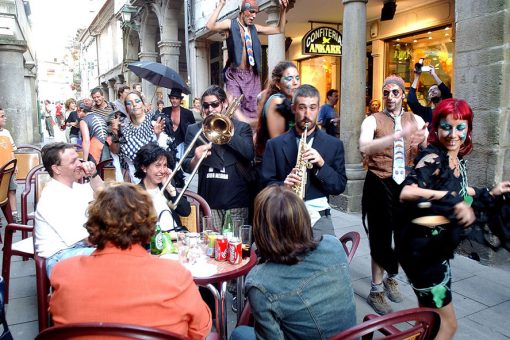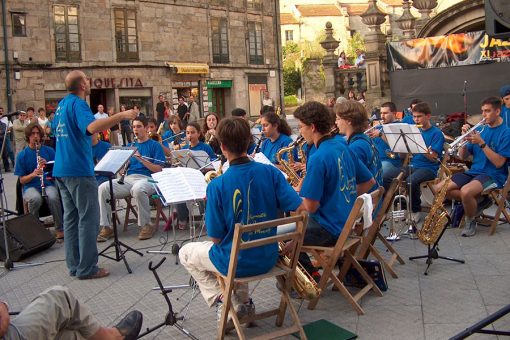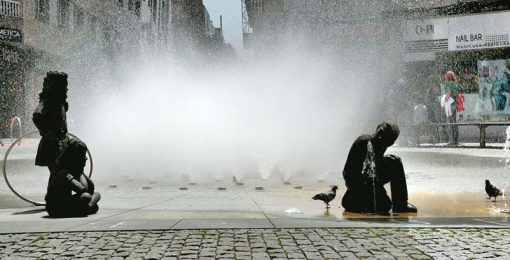Back in the 1950s, before motorized vehicles flooded the city, local streets were regarded as spaces for public coexistence, trade and enjoyment. The city was capable of meeting industrial, commercial and social demands without any major hindrance.
With the arrival of private cars, pedestrians were forced to compete with vehicles for a space that had previously been theirs, a shift that could also be observed in the Historic Center, which had not been conceived or designed for circulation. Motorized vehicles became pre-eminent in the city streets and squares, transforming them into spaces for indiscriminate and disorganized parking.
The new mobility schemes try to make clear that when somebody buys a car, they are not granted the right to privatize a fragment of any public space –which is so fundamental for the population– and thus to prevent others from developing urban life activities such as going for a walk, reaching their destination safely without finding any obstacle in their way, or combining several different modes of transportation.
Boosting the local economy
The “city without cars” is much more efficient than a mobility scheme centered on private vehicles because it makes it possible for all users to have access to any point, at any time, as conveniently as possible. In addition, shop windows increase their visibility, bars are encouraged to install open-air terraces and people feel much safer in a friendlier, more familiar environment. These are some of the basic principles to strengthen the social economy and support sustained growth in the services sector; therefore, it would be remiss not to concentrate policy efforts in this direction.
Many professionals and entrepreneurs who had strongly opposed the implementation of a new mobility scheme that put pedestrians first, soon realized that the advantages were incontrovertible. Most local commerce associations outside the inner ring have started to demand that pedestrianizing interventions reach even further and that traffic calming measures be applied more intensively, as they feel both initiatives would produce remarkable increases in urban quality and contribute to the modernization of their business model.
Public events, festivities and celebrations
Predominantly pedestrianized public spaces such as those of Pontevedra make it easier to organize multitudinous events. Large, open areas lend themselves particularly well to sports competitions, music festivals and cultural celebrations. When managed appropriately, these are ideal opportunities for the services and hospitality industry to gain visibility, given that the municipality turns into a national or international meeting point for several days, if not weeks. This influx of visitors has a positive impact throughout the city and beyond it.
Such events should not disturb normal urban functioning or cause the local population any inconvenience, regardless of their intensity. The mobility model should be ready to face up to the challenges of the Feira Franca –a medieval fair organized in early September during which the population figures can at least double–, Peregrina in mid-August –which celebrates the patron saint of the city– or the world championships for which Pontevedra has repeatedly served as an excellent venue.
More space
The integral plan for pedestrianization in Pontevedra constituted a long process organized in different stages that required constant consultation with all stakeholders. When it started in 1999, the Historic Center was the first area on which the intervention took place. More than 500 motorized vehicles used this small sector of great cultural and architectural value as if it were a surface parking lot, preventing the development of urban activities and contributing to the overall degradation of a heritage site, to the point of risking its transformation into an alienating, marginal neighborhood.
After the city center, the pedestrianization scheme reached key points that could affect pre-existing structures of local commerce, which required both a renovation of municipal ordinances and a pedagogical effort on the part of the advocates of a mobility scheme that would give absolute priority to residents going on foot. Once the initial reticence was overcome, the expansion of pedestrianization became unstoppable: people’s satisfaction with the results led to active, rather than implicit or passive, support for the new traffic regulations and safety measures. As the implementation process continued, the fundamental mobility axes were being transformed, particularly those connecting the Historic Center with the bus and train stations and the river Lérez footpaths. The immediate consequence of this reorganization was the greater availability of large open spaces.
What are the streets like?
Most of the narrowest streets are now fully pedestrianized. Those whose width was between 8 and 10 meters were redesigned as single platforms with pedestrian priority and motorized access restricted to essential service providers. Those between 10 and 14 meters combined a single lane for traffic, wider sidewalks and surface parking spaces with strict time limits to favor the circulation of suppliers and delivery services. In the case of streets 14 meters or wider, the distribution is equitable: spacious sidewalks, surface parking spaces and two lanes for motorized traffic.







